News
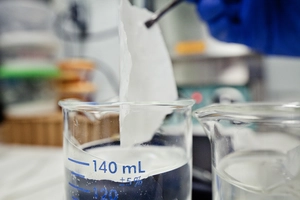
How new materials increase the efficiency of direct ethanol fuel cells
Research group investigated novel composite membrane at BESSY II:
A group from Brazil and an HZB team have investigated a novel composite membrane for ethanol fuel cells. It consists of the polymer Nafion, in which nanoparticles of a titanium compound are embedded by the rarely…
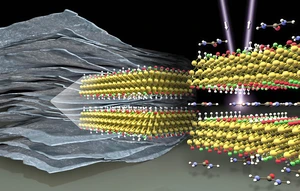
New class of materials for energy storage researched at HZB
2D titanium carbides store large amounts of electrical energy and can be charged and discharged in a matter of seconds:
Two dimensional titanium carbides, so-called MXenes, are being discussed as candidates for the rapid storage of electrical energy. Like a battery, MXenes can store large amounts of electrical energy through…
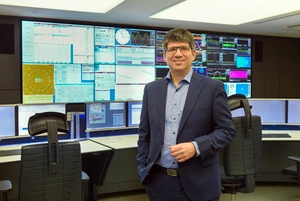
Local answers to global challenges
Bernd Rech (HZB) and Ulrich Panne (BAM) about new ways towards a resource-saving energy supply and new materials:
We are entering a new decade – faced by climate change, a growing global population, and a maltreated environment, many look into the future with some trepidation. However, with researchers working on solutions,…
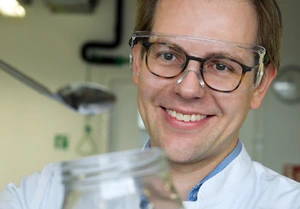
Fair resources
Tungsten Consulting is developing procedures for environmentally friendly chemical processing of raw materials – such as graphite, large amounts of which are used in batteries:
Storage batteries are in high demand: for cars and bikes used in electromobility as well as mobile electronics devices. The benefits for climate protection and health are heavily advertised but not many like to talk…
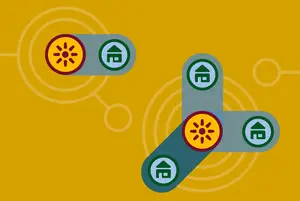
Off-Grid Renewable Energy opens up pathways for Electricity Access and Climate Action
Researchers from the Reiner Lemoine Institute (RLI) present study on the importance of off-grid systems:
Achieving universal electrification by 2030 (SDG7) implies the provision of electricity access to more than 1.2 billion people cumulatively, of which the majority characterizes as highly climate vulnerable. Together…
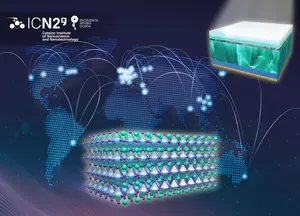
HZB scientists participate in consensus statement for perovskite test methods
Collection of aging measurement protocols published in Nature Energy:
Experts from 51 research institutions have now agreed on the procedures for measuring the stability of perovskite solar cells and assessing their quality. The consensus statement was published in Nature Energy and is…

HZB scientist provides new insights into perovskite solar cell research
Plants absorb lead from perovskite solar cells more than expected:
Lead from metal-organic perovskite compounds can be absorbed particularly easily by plants. The bioavailability is significantly higher than that of lead from inorganic compounds as found in batteries. This is shown…
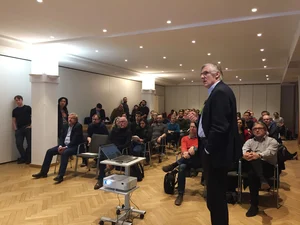
New Network “Campus Club Adlershof” for Material and Environmental Technology
Interdiciplinary Cooperation and Talent-Recruiting:
With more than 60 participants, the event exceeded all expectations. The start-ups OrelTech, INURU, Nano-Join, Tiwari, Solaga and PSC presented the current status of their research and products from the Adlershof…
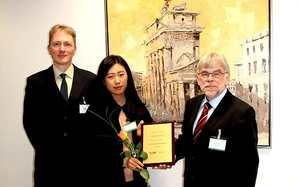
21st International Sales Meeting of LUM GmbH
Sales experts from all over the world meet at the headquarters in Adlershof:
From January 27th to 29th the International Sales Meeting will take place at the headquarters of LUM GmbH in Berlin-Adlershof for the 21st time in a row. The sales experts of the LUM companies from Asia, Europe and…
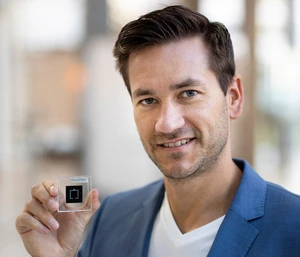
Berlin Science Award: Young Talent Award for Steve Albrecht
Governing Mayor honours HZB scientist for outstanding research achievements in the field of novel tandem solar cells:
On November 7, 2019, Michael Müller, Governing Mayor of Berlin and Senator for Science and Research, honoured outstanding research achievements for the twelfth time. Prof. Dr. Steve Albrecht was honoured this year…
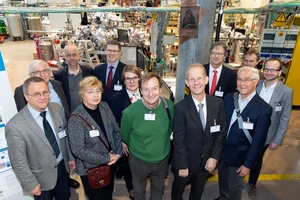
New instrument at BESSY II commences user operation
The powerful measurement station for photoelectron spectroscopy and microscopy has been developed in the Russian-German Laboratory:
A new instrument became available to the users of BESSY II on Oct. 28, 2019. The new beamline and apparatus for spin- and angular-resolved photoemission in the Russian-German Laboratory at BESSY II have successfully…
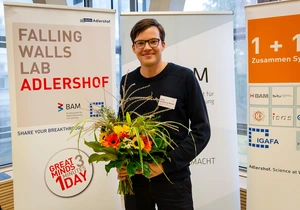
Julius Upmeier zu Belzen is winner of the Falling Walls Lab Adlershof 2019
With around 30 applications, Adlershof was again the most successful lab in Germany:
Great minds, 3 minutes, 1 day – Falling Walls Labs take place globally throughout the year. The Lab is a platform for excellent academics, entrepreneurs and professionals from all disciplines who get the opportunity…

HZB strengthens its technology transfer
Helmholtz-Zentrum Berlin wants to bring technologies to market faster together with industrial partners:
The Helmholtz-Zentrum Berlin (HZB) wants to bring technologies to market faster together with industrial partners and use its expertise in materials and energy research to investigate questions from industry in joint…
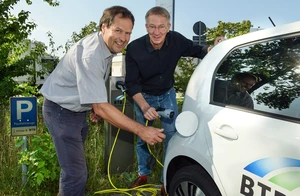
Excess electricity for electric mobility
In the FlexNet4E-Mobility research project, strategies for more sustainable mobility are developed:
When the power grid works at full capacity, electricity from renewable energy sources is cut back. In the FlexNet4E-Mobility project, a consortium of the Berlin-based energy provider BTB is developing strategies to…

Riding the waves low-noise and emissions-free – a perfect day out on the water
Start-up Greenboatsolutions helps boat owners convert to electric engines:
Electric cars, bikes and scooters: out on the streets, the electrification of transportation is well underway. But how about on the water? Germany has more than 500,000 boats on inland waters and in coastal areas.…
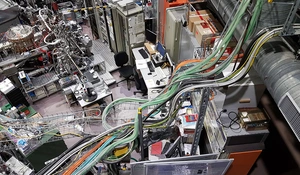
Physicists develop "time machine" for materials research at Bessy II
About two million euros in funding from the Federal Ministry of Education and Research (BMBF) for the project:
Researchers from Martin Luther University Halle-Wittenberg (MLU), Freie Universität Berlin and Technische Universität München will develop fast electronics for data acquisition at BESSY II. It will make it possible to…
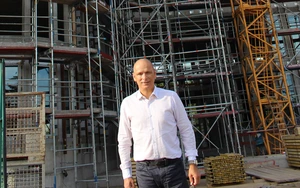
Environmentally friendly mobility for a booming neighbourhood
Electric engines and shuttle services aim to take the pressure off local traffic:
‘Mobility is changing the way we work and the offices we work in,’ says Dirk Germandi. As the managing director of the real estate company Projektgesellschaft Gartenstadt Adlershof, Brain Box Berlin (BBB) is much more…
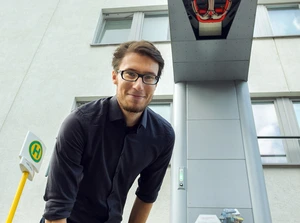
Batteries vs. fuel cells
The Reiner Lemoine Institute compiled an overview of the advantages and disadvantages:
Over the past few years, traffic and transportation are Germany’s only sectors where greenhouse gas emissions are increasing. Switching to electric cars is an important countermeasure to this trend. There are…
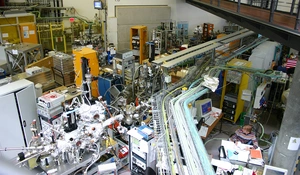
German Russian collaboration further strengthened at HZB
New Research Group to Investigate Quantum Materials for Future Information Technologies:
HZB physicist Jaime Sanchez-Barriga can establish a "Helmholtz-RSF Joint Research Group". Over the next three years he will receive additional funding from the Helmholtz Association and the Russian Science Foundation…
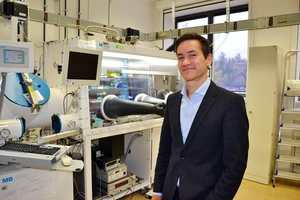
Steve Albrecht wins the 2019 Karl Scheel Prize
The Physikalische Gesellschaft zu Berlin honours the researcher of the Helmholtz-Zentrum Berlin for his work in the field of highly efficient tandem solar cell absorbers made of metal-halide perovskites:
The award will be presented to Prof. Steve Albrecht in Magnus House of the Physikalische Gesellschaft zu Berlin on Friday, June 28, 2019. Albrecht will also deliver a lecture entitled “Highly Efficient Tandem Solar…